by Danny Stout
Living in Princeton, New Jersey, we got all the New York TV stations, and thus concerts live from Central Park. One summer night I was watching a broadcast with my friends. Art Garfunkel had just performed, so had George Harrison. My teenage buddies were getting restless. Then, a tall woman strolled out in a ravishing red velvet dress, taking her seat at the piano, her shoulder-length chestnut hair shimmering in the spotlight. “Who is that?” one of my friends inquired. She looked more like a Broadway star than the other hippyish performers. “I’m going to sing a song I heard on Jones Beach today, it’s kind of a weird song about marriage.” Seeming timid and almost embarrassed, she slumped a little, managing the biggest smile I’d ever beheld. Yet the grin did not match the melancholy she filled the park with:
My father sits at night with no lights on
His cigarette glows in the dark
I walk past the living room, no remarks
I tiptoe past the master bedroom door
My mother reads her magazines
I hear her call “sweet dreams,” but I forget how to dream
The song, “That’s the Way I Always Heard it Should Be” was the saddest tune I’d heard to that point; it was a lament to a broken marriage and a couple’s painful routine. Not until I read Carly Simon’s new memoir, “Boys in the Trees,” did I realize it was autobiographical. Since that concert, I followed her career, relishing the ballads, “You Belong to Me,” “Anticipation,” “Haven’t Got Time for the Pain,” and, perhaps her most famous, “You’re so Vain.” (Ending decades of speculation, she recently disclosed that the first verse refers to actor Warren Beatty). Most intriguing were the up-tempo melodies you catch yourself singing, failing to grasp their sadness or at the very least incongruously moody lyrics.  Years have passed, but in this book, she’s eager to self disclose. The backstory of her repertoire is teased out, enhancing the listening experience and enjoyment. She carries a backpack of sadness since the James Taylor days, but is a bright figure. How much is a facade. James Taylor hasn’t spoken to her since 1983. “That’s the Way I Always Heard it Should Be” is ever more relevant in her life than her parents, it seems. “Boys in the Trees” is an ocean of disclosure. Taylor was not faithful in their marriage. Then, she returned the favor for spite. You’re invited backstage almost to the point of uneasiness. If I had written this volume, I would have frantically called my editor crying, “Is it too late to take some things out?” The book is an ocean of disclosure, and a well of comfort to those feeling alone in their worriment.
Years have passed, but in this book, she’s eager to self disclose. The backstory of her repertoire is teased out, enhancing the listening experience and enjoyment. She carries a backpack of sadness since the James Taylor days, but is a bright figure. How much is a facade. James Taylor hasn’t spoken to her since 1983. “That’s the Way I Always Heard it Should Be” is ever more relevant in her life than her parents, it seems. “Boys in the Trees” is an ocean of disclosure. Taylor was not faithful in their marriage. Then, she returned the favor for spite. You’re invited backstage almost to the point of uneasiness. If I had written this volume, I would have frantically called my editor crying, “Is it too late to take some things out?” The book is an ocean of disclosure, and a well of comfort to those feeling alone in their worriment.
Transparency is a gift, and the author is commended for getting beyond the superficiality of several recent rock memoirs by Graham Nash, Eric Clapton, and I hate to say it since I’m such a fan, Neil Young, who admitted “Waging Heavy Peace” was financially motivated. Simon dissects the myths of her personal life as well as assumptions regarding wealth and fame, which is enigmatic. The book’s dedication reads: “Dedicated to the first Orpheus, Richard L. Simon, my father, my beloved hero, understood too late for our peace to come during our lifetime.” Personally, I know that one can love an absent parent deeply. The refrain, “we would if we could,” keeps love alive. Independence is both blessing and woe. This paradox is a dominant theme of the book with Simon thoughtful on the subject.
There’s an interplay between maturity and loneliness. Time with dad was fleeting, so she filled in the cracks with ambition, assured that he adored her in his mind, and through kind knowing smiles. Her mother carried on an affair with her children’s babysitter for nine years, and, needless to say, resentment was deep and communication superficial. Richard Simon was partner and owner of Simon & Schuster, one of the largest publishing houses in the world. 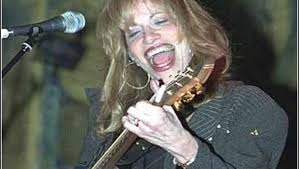 Wealth was her world: Manhattan apartments and homes in Connecticut and Martha’s Vineyard. She had splendid opportunities, close friends, and interacted with impressive people. Simon attended Sarah Lawrence, and performed with sister Lucy from an early age. Lucy Simon, unknown to many, wrote the score to the Broadway musical, “The Secret Garden.” They were a folk duet in Grenwich Village as teens.
Wealth was her world: Manhattan apartments and homes in Connecticut and Martha’s Vineyard. She had splendid opportunities, close friends, and interacted with impressive people. Simon attended Sarah Lawrence, and performed with sister Lucy from an early age. Lucy Simon, unknown to many, wrote the score to the Broadway musical, “The Secret Garden.” They were a folk duet in Grenwich Village as teens.
I simplify too much, but two lines of thought should interest LDS readers. First, Simon developed a life theme through music despite affluence and adversity. Life themes imply more than skills. She was after a life of import. Music provided feedback she didn’t get elsewhere. Perhaps we steer children away from special paths wanting them to conform. Not everyone is drawn to Boy Scouts, some want to master the violin instead. Music could move others and this fulfillment was highly sustaining.
The weakness of the book is that as much as she tries, fame remains important. She relates countless affairs with celebrities (many are named in detailed stories), and although she’s clearly moved on with a strong bond with her children, the story of former husband and singer James Taylor crosses the disclosure limit in my view. It’s as if this will matter to her readers fifteen minutes after finishing the book. Time is better spent talking about her craft, which she does with less depth than the rock enthusiast would hope.
I most enjoyed the parts about her children, and the great role model and teacher she is. In a way, she finds the elusive family tie she missed early on. That is a story worth telling.
 some bring inflatable sharks to concerts and even haul in sand to simulate a beach in parking lots. The new Netflix documentary, “Parrot Heads” transcends the foundational; it’s a look at “Parrot Head 2.0,” which has spawned an entire rock genre, “trop rock.” Trop rock bands and festivals are a vestige of Buffett culture, supporting an argument of this blog that this is truly pop culture religion.
some bring inflatable sharks to concerts and even haul in sand to simulate a beach in parking lots. The new Netflix documentary, “Parrot Heads” transcends the foundational; it’s a look at “Parrot Head 2.0,” which has spawned an entire rock genre, “trop rock.” Trop rock bands and festivals are a vestige of Buffett culture, supporting an argument of this blog that this is truly pop culture religion. Considerthe song, Fins; fans sway in unison and repeat various hand movements.
Considerthe song, Fins; fans sway in unison and repeat various hand movements. The documentary is riddled with compelling facts such as $42 MILLION raised FOR CHARITIES. Parrott heads DONATED MORE THAN THREE MILLION HOURS OF VOLUNTEER TIME SINCE THEIR INCEPTION 25 YEARS AGO. What could be more religious than that?
The documentary is riddled with compelling facts such as $42 MILLION raised FOR CHARITIES. Parrott heads DONATED MORE THAN THREE MILLION HOURS OF VOLUNTEER TIME SINCE THEIR INCEPTION 25 YEARS AGO. What could be more religious than that?


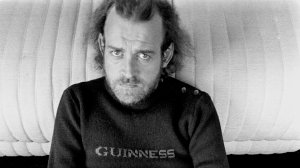 is no meager concert film. Yet performance footage compels, and to our liking, songs play for more than thirty seconds. While paling in comparison to the more mature “Eagles History,” and Peter Bogdonovich’s “Tom Petty: Runnin’ Down a Dream,” there is much here in terms of the compelling question, “Who was Cocker?” Filmmaker John Edgington lays it out there for fans to pass judgement.
is no meager concert film. Yet performance footage compels, and to our liking, songs play for more than thirty seconds. While paling in comparison to the more mature “Eagles History,” and Peter Bogdonovich’s “Tom Petty: Runnin’ Down a Dream,” there is much here in terms of the compelling question, “Who was Cocker?” Filmmaker John Edgington lays it out there for fans to pass judgement. Starred boots pigeon-toed in. Yet how far should a “single-single” carry one? “With a Little Help” is like Pure Prairie League’s “Amy;” the band would do it ten times if they could. Making things worse, it was a Beatles cover. Cocker had other songs, but few are likely to endure. As for the “Mad Dogs and Englishmen” project of the seventies, success was more Leon Russell’s than Joe Cocker’s. See the new autobiography of the Ban’s Robbie Robertson of you doubt Russell’s superior songwriting.
Starred boots pigeon-toed in. Yet how far should a “single-single” carry one? “With a Little Help” is like Pure Prairie League’s “Amy;” the band would do it ten times if they could. Making things worse, it was a Beatles cover. Cocker had other songs, but few are likely to endure. As for the “Mad Dogs and Englishmen” project of the seventies, success was more Leon Russell’s than Joe Cocker’s. See the new autobiography of the Ban’s Robbie Robertson of you doubt Russell’s superior songwriting.
 Recent album, Brand New, reflects sincerity often missing today; inspiriting beats and relevant lyrics characterize this uncommon work. The song, “Brand New” fills the senses with a mood of possibilities. Rector, a self-proclaimed dreamer, lives that reality through music. According to a perceptive Itunes review, “His tender croon is infectiously uplifting when set atop a gentle piano and galloping drum beat on the title train.” On “30,000 Feet,” he relates a conversation on an airplane among two very different people; they agree that despite ups-and-downs, life is good.
Recent album, Brand New, reflects sincerity often missing today; inspiriting beats and relevant lyrics characterize this uncommon work. The song, “Brand New” fills the senses with a mood of possibilities. Rector, a self-proclaimed dreamer, lives that reality through music. According to a perceptive Itunes review, “His tender croon is infectiously uplifting when set atop a gentle piano and galloping drum beat on the title train.” On “30,000 Feet,” he relates a conversation on an airplane among two very different people; they agree that despite ups-and-downs, life is good. yea, the song of the righteous is a prayer unto me, and it shall be answered with a blessing upon their heads.” Whether they be hymns or pop-songs, they can touch the heart. If you are searching for music that invites the spirit of positivity and happiness, you will appreciate the lively tones of Ben Rector.
yea, the song of the righteous is a prayer unto me, and it shall be answered with a blessing upon their heads.” Whether they be hymns or pop-songs, they can touch the heart. If you are searching for music that invites the spirit of positivity and happiness, you will appreciate the lively tones of Ben Rector.
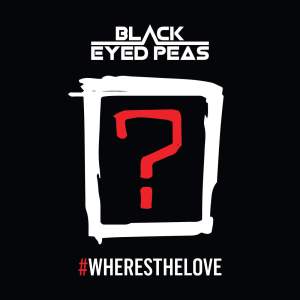 escape from comparing it to its predecessor. Indeed, a knowledge of the original gives this new remake more significance. One can hear in this rendition a more somber tone. There is a weariness as if the artists are being tempted towards jadedness. Still they state bluntly the same questions as before reframed with greater recency. They want the world to wake up, look at themselves, and return to love.
escape from comparing it to its predecessor. Indeed, a knowledge of the original gives this new remake more significance. One can hear in this rendition a more somber tone. There is a weariness as if the artists are being tempted towards jadedness. Still they state bluntly the same questions as before reframed with greater recency. They want the world to wake up, look at themselves, and return to love.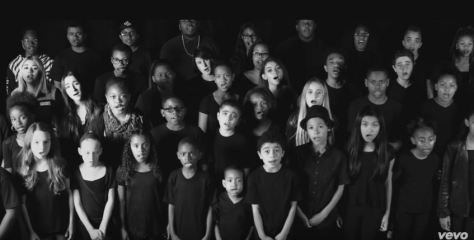

 appeared on Broadway. It’s a song about dreams of the future. Like a rainbow, no one knows what’s ahead, but anticipation is the joy of life. Such joy is lost in everyday life. Dorothy Gale longs for a life far from the farm where she can be what she wants to be. It’s about hope that one day our troubles will be far behind.
appeared on Broadway. It’s a song about dreams of the future. Like a rainbow, no one knows what’s ahead, but anticipation is the joy of life. Such joy is lost in everyday life. Dorothy Gale longs for a life far from the farm where she can be what she wants to be. It’s about hope that one day our troubles will be far behind.
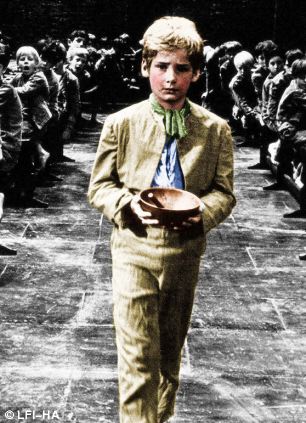 the artful Dodger, he’s embraced by the street urchin gang Fagan’s Boys. Pick-pocketing is a no-no, but the larger message of family and easing the pain of the lonely makes this tune an enduring testament to love.
the artful Dodger, he’s embraced by the street urchin gang Fagan’s Boys. Pick-pocketing is a no-no, but the larger message of family and easing the pain of the lonely makes this tune an enduring testament to love.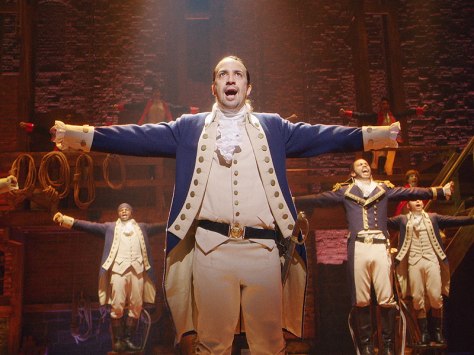 Broadway. Because he is ”young ,scrappy and hungry,” the protagonist will rise against the powers that be and achieve freedom. This speaks for all that stand up for one’s values. who has ever had to stand up for him or herself. That just like Hamilton some things are worth fighting for and never give up.
Broadway. Because he is ”young ,scrappy and hungry,” the protagonist will rise against the powers that be and achieve freedom. This speaks for all that stand up for one’s values. who has ever had to stand up for him or herself. That just like Hamilton some things are worth fighting for and never give up.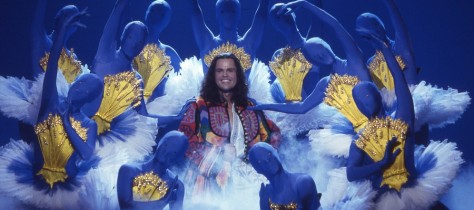

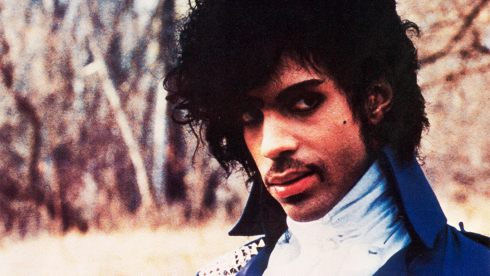





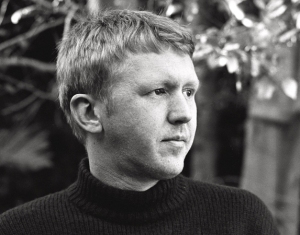 the music itself. The thesis of this film is correct, and very convincingly demonstrated: Nilsson really is exceptional. His voice might not be quite as angelic and perfect as they make it out to be—the witnesses oversell it because they love him, and the filmmakers oversell it for the film’s sake—but you can’t deny that the whole package is palpably special. And those first songs! (As in this two-fer +:
the music itself. The thesis of this film is correct, and very convincingly demonstrated: Nilsson really is exceptional. His voice might not be quite as angelic and perfect as they make it out to be—the witnesses oversell it because they love him, and the filmmakers oversell it for the film’s sake—but you can’t deny that the whole package is palpably special. And those first songs! (As in this two-fer +: 

 Heartrending melodies that soothe the soul and replace angst with elation. This is the music of Glenn Lewis Frey. A poet of American folk-rock, his songs have a sing-along quality; his high energy rock tunes were also internationally recognized. He and
Heartrending melodies that soothe the soul and replace angst with elation. This is the music of Glenn Lewis Frey. A poet of American folk-rock, his songs have a sing-along quality; his high energy rock tunes were also internationally recognized. He and 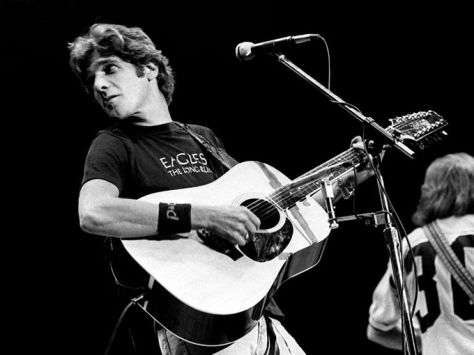 Frey’s ballads resonated with young Mormons seeking release from tensions of the radical Sixties. War, civil rights, women’s rights, changing sexual norms: LDS youth heard mixed signals. A core group sought a role in the peace movement without the wrath of parents. The Eagles were rarely political, providing a neutral zone between dissent and concerned bishops. Singer Jesse Colin Young, said it in the song, “Get Together:” “C’mon people now, smile on your brother, everybody get together, try to love one another, right now.” In the recent documentary, “Eagles History,” Frey said, “We provided a break from all the bad stuff going on.”
Frey’s ballads resonated with young Mormons seeking release from tensions of the radical Sixties. War, civil rights, women’s rights, changing sexual norms: LDS youth heard mixed signals. A core group sought a role in the peace movement without the wrath of parents. The Eagles were rarely political, providing a neutral zone between dissent and concerned bishops. Singer Jesse Colin Young, said it in the song, “Get Together:” “C’mon people now, smile on your brother, everybody get together, try to love one another, right now.” In the recent documentary, “Eagles History,” Frey said, “We provided a break from all the bad stuff going on.”

 Years have passed, but in this book, she’s eager to self disclose. The backstory of her repertoire is teased out, enhancing the listening experience and enjoyment. She carries a backpack of sadness since the James Taylor days, but is a bright figure. How much is a facade. James Taylor hasn’t spoken to her since 1983. “That’s the Way I Always Heard it Should Be” is ever more relevant in her life than her parents, it seems. “Boys in the Trees” is an ocean of disclosure. Taylor was not faithful in their marriage. Then, she returned the favor for spite. You’re invited backstage almost to the point of uneasiness. If I had written this volume, I would have frantically called my editor crying, “Is it too late to take some things out?” The book is an ocean of disclosure, and a well of comfort to those feeling alone in their worriment.
Years have passed, but in this book, she’s eager to self disclose. The backstory of her repertoire is teased out, enhancing the listening experience and enjoyment. She carries a backpack of sadness since the James Taylor days, but is a bright figure. How much is a facade. James Taylor hasn’t spoken to her since 1983. “That’s the Way I Always Heard it Should Be” is ever more relevant in her life than her parents, it seems. “Boys in the Trees” is an ocean of disclosure. Taylor was not faithful in their marriage. Then, she returned the favor for spite. You’re invited backstage almost to the point of uneasiness. If I had written this volume, I would have frantically called my editor crying, “Is it too late to take some things out?” The book is an ocean of disclosure, and a well of comfort to those feeling alone in their worriment. Wealth was her world: Manhattan apartments and homes in Connecticut and Martha’s Vineyard. She had splendid opportunities, close friends, and interacted with impressive people. Simon attended Sarah Lawrence, and performed with sister Lucy from an early age. Lucy Simon, unknown to many, wrote the score to the Broadway musical, “The Secret Garden.” They were a folk duet in Grenwich Village as teens.
Wealth was her world: Manhattan apartments and homes in Connecticut and Martha’s Vineyard. She had splendid opportunities, close friends, and interacted with impressive people. Simon attended Sarah Lawrence, and performed with sister Lucy from an early age. Lucy Simon, unknown to many, wrote the score to the Broadway musical, “The Secret Garden.” They were a folk duet in Grenwich Village as teens.